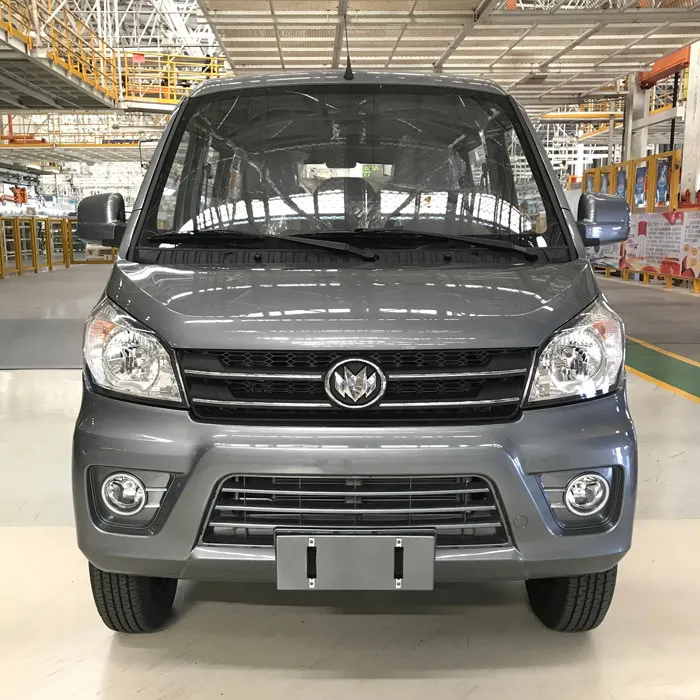Characteristics of 8 Seats Electric Minivan
2024-07-28
An 8-seat electric minivan is a type of electric vehicle (EV) designed to accommodate up to eight passengers while offering the benefits of electric propulsion. These minivans combine the spaciousness and versatility of traditional minivans with the efficiency and environmental advantages of electric power. Here are the key characteristics of an 8-seat electric minivan:
1. Performance and Powertrain
- Electric Powertrain: Powered entirely by electric motors, eliminating the need for gasoline or diesel fuel. Typically includes a high-capacity battery pack that provides the necessary power for driving.
- Range: Offers a driving range on a single charge that varies depending on the battery size and driving conditions. Modern electric minivans can have ranges from 200 to over 300 miles (320 to 480 km) per charge.
- Charging: Supports various charging options, including standard home charging (Level 1), faster Level 2 charging, and rapid DC fast charging for quicker top-ups.
2. Interior and Seating
- Seating Capacity: Designed to comfortably seat up to eight passengers. Configurations typically include three rows of seating, with options for captain’s chairs or bench seats in the second and third rows.
- Comfort and Convenience: Equipped with amenities such as adjustable seats, climate control, and ample legroom and headroom. Higher trims may offer luxury features like leather upholstery, heated seats, and advanced climate control.
- Cargo Space: Offers a versatile cargo area with options for folding or removing seats to increase storage capacity when needed.
3. Design and Dimensions
- Exterior Design: Features a sleek and modern design that combines aerodynamic efficiency with practicality. The design often emphasizes a spacious and family-friendly layout.
- Dimensions: Generally similar in size to traditional minivans, with a length that accommodates the eight-seat configuration while providing ample interior space.
4. Technology and Infotainment
- Infotainment System: Equipped with a touchscreen infotainment system that includes navigation, media playback, smartphone integration (Apple CarPlay, Android Auto), and voice controls.
- Connectivity: Includes features such as Bluetooth connectivity, Wi-Fi hotspot capability, and USB ports for charging and media access.
- Driver Assistance: Often includes advanced driver assistance systems (ADAS) such as adaptive cruise control, lane-keeping assist, automatic emergency braking, and parking sensors or cameras.
5. Safety Features
- Crash Safety: Designed with safety features such as reinforced body structures, multiple airbags, and advanced safety systems to protect passengers in the event of a collision.
- Active Safety: Includes active safety technologies such as collision avoidance systems, blind-spot monitoring, and rear cross-traffic alert to enhance driving safety.
6. Efficiency and Environmental Impact
- Energy Efficiency: Generally more efficient than traditional internal combustion engine vehicles, with lower operating costs due to the lack of fuel and fewer moving parts.
- Emissions: Produces zero tailpipe emissions, contributing to a reduction in air pollution and a smaller carbon footprint compared to gasoline or diesel vehicles.
7. Charging Infrastructure
- Home Charging: Can be charged at home using a standard electrical outlet or a dedicated Level 2 home charging station for faster charging.
- Public Charging: Compatible with public charging networks, including DC fast chargers for long-distance travel and quick charging needs.
8. Comfort and Ride Quality
- Ride Comfort: Provides a smooth and quiet ride due to the electric drivetrain’s lack of engine noise and vibrations. Features such as adjustable suspension systems may be included for enhanced comfort.
- Climate Control: Includes advanced climate control systems with options for both front and rear passenger comfort.
9. Cost and Incentives
- Purchase Price: Generally higher upfront cost compared to traditional minivans due to the cost of electric vehicle technology. However, prices may vary depending on the manufacturer, model, and trim level.
- Incentives: May be eligible for government incentives, rebates, or tax credits that can reduce the effective purchase price and offset some of the initial costs.
10. Maintenance and Reliability
- Maintenance: Requires less maintenance compared to traditional vehicles, as electric drivetrains have fewer moving parts and do not require oil changes. Regular maintenance includes checking the battery health and software updates.
- Reliability: Electric minivans are designed for reliability with advanced battery management systems and durability features to ensure long-term performance.
Summary
An 8-seat electric minivan combines the spaciousness and practicality of a traditional minivan with the benefits of electric propulsion. It offers a range of features that include advanced technology, comfort, safety, and environmental benefits. While the initial cost may be higher, the long-term savings on fuel and maintenance, along with the positive environmental impact, make it an appealing option for families and individuals seeking a sustainable and versatile vehicle.



